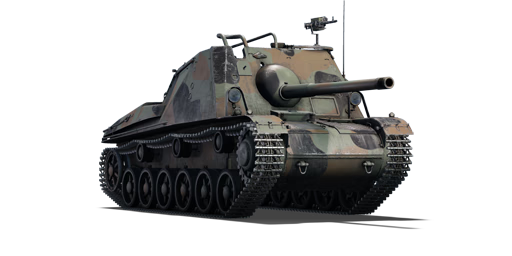



The Pvkv m/43 (1946) was a tank destroyer developed during World War 2, drawing inspiration from German designs. It aimed to provide mobile anti-tank capability with protection, following the German model of using an anti-tank cannon in a casemate-structured tank hull. Its design, influenced by vehicles like the Marder III and StuG III, focused on supporting vehicles with lesser firepower and engaging heavily armoured targets at a distance. Initially planned with a shorter 7.5 cm L/28 gun, it was later equipped with a modified 7.5 cm Lvkan m/36 featuring a longer L/50 barrel for enhanced penetration. Despite being developed in 1942 and ordered for 1944, production delays meant the first deliveries didn't occur until 1946, with the last arriving in 1948. Until the introduction of the Centurion in 1953, the Pvkv m/43 (1946) remained the primary vehicle for neutralizing hostile tanks. In the 50s, plans were made for an upgrade of the Pvkv m/43 but only were put in effect in the 60s as the Pvkv m/43 (1963), extending its life until the 70s. After decommissioning, its cannons found further use in coastal artillery fortifications, defending Swedish coasts until 1995.
Introduced in Update 1.97 "Viking Fury", the Pvkv m/43 (1946) is a deceivingly well-armoured open-top tank destroyer, while it still poses a vulnerability to the crew, especially from overpressure and strafing aircraft. While the expected armour thickness of around 30 mm covers all sides except the front, the frontal protection is significantly stronger at 80 mm effective, capable of resisting most moderate penetrations. Coupled with the gun sight's high zoom and the gun's -15° depression, the tank excels as a long-range sniper.
| Ammunition | Type | Armor penetration (mm) at a distance: | |||||
|---|---|---|---|---|---|---|---|
| 10 m | 100 m | 500 m | 1000 m | 1500 m | 2000 m | ||
| AP | 139 | 136 | 121 | 104 | 90 | 78 | |
| APCBC | 149 | 146 | 132 | 116 | 102 | 89 | |
| HE | 18 | 17 | 16 | 14 | 13 | 12 | |
| Belt | Belt filling | Armor penetration (mm) at a distance: | |||||
|---|---|---|---|---|---|---|---|
| 10 m | 100 m | 500 m | 1000 m | 1500 m | 2000 m | ||
| API-T/AP/I | 13 | 12 | 7 | 3 | 2 | 0 | |












Mobility | |
|---|---|
Protection |
|---|
Firepower |
|---|